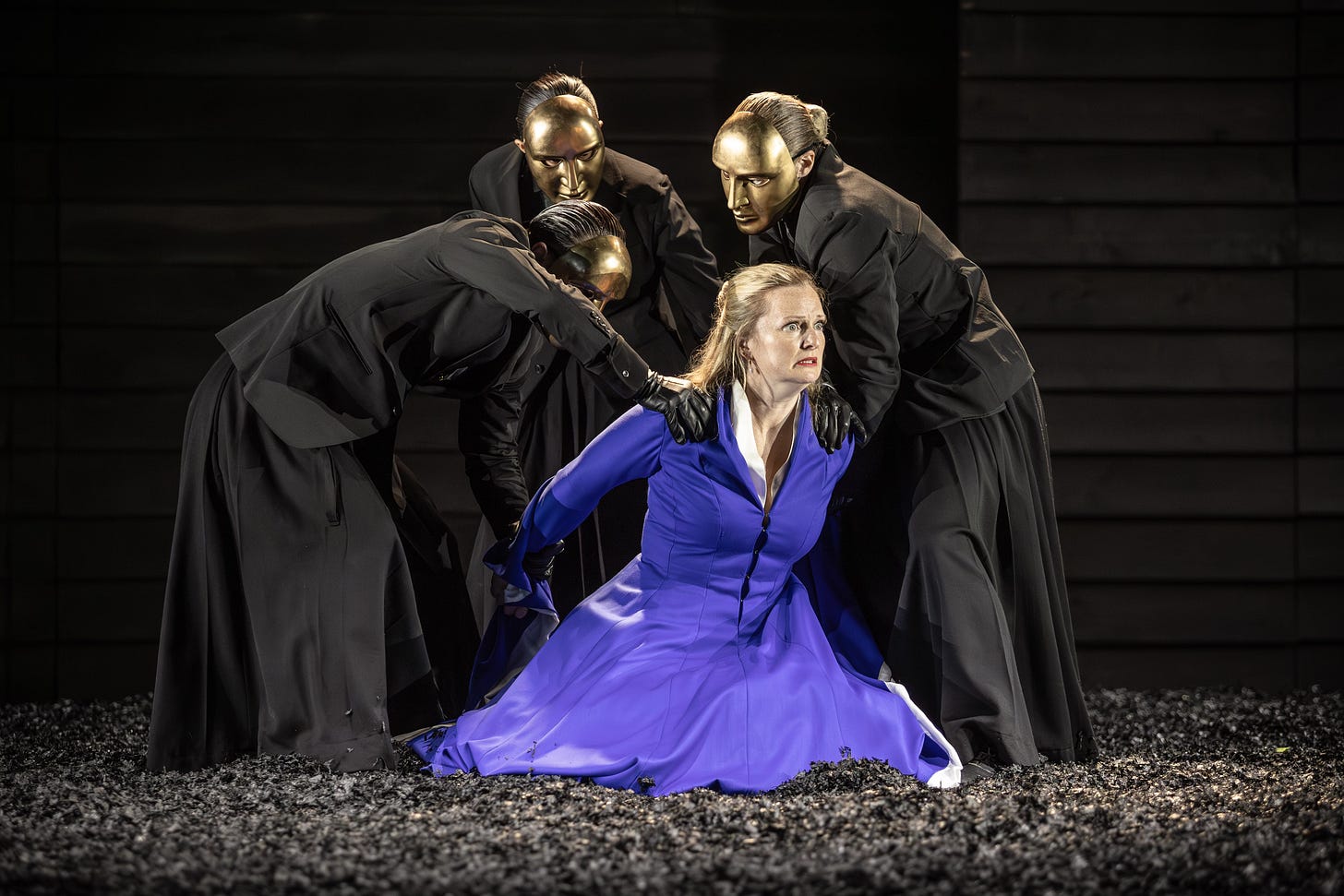Rodelinda in extremis: Lucy Crowe and dancers Picture © Craig Fuller
Rodelinda was the third of a trio of masterpieces Handel presented to London audiences in the autumn/winter season of 1724/25, following hard on the heels of Giulio Cesare and Tamerlano. All three were written with Italian superstars of the day in mind, notably the alto castrato Francesco Bernardi (known as Senesino) and the soprano Francesca Cuzzoni. For their compatriot Francesco Borosini, Handel created his most notable tenor roles in an era when tenors generally played cantankerous old fathers and confidants in an operatic world dominated by emasculated male and female virtuosi.
When Borosini arrived in London early in 1724, he brought with him the score of Gasparini’s Il Bajazet, the title role of which he had created in Reggio Emilia in 1719. Handel was sufficiently impressed to modify Tamerlano, based on the same libretto, for him - borrowing ideas from Gasparini for the harrowing suicide scene of the Ottoman emperor.
In Rodelinda, the third of Garsington Opera’s new productions this summer, Borosini took the role of the usurping tyrant Grimoaldo. In the popularity stakes this opera may have lost ground to Giulio Cesare in the years since the Handel tercentenary (1985), but it was the first of Handel’s Italian opere serie to be revived in the modern era (at Göttingen in 1920, in a long-discredited edition based on Chrysander’s 19th century score).
Keep reading with a 7-day free trial
Subscribe to Operalogue to keep reading this post and get 7 days of free access to the full post archives.




